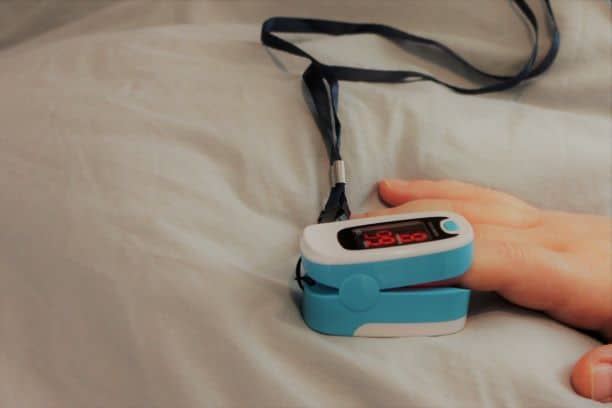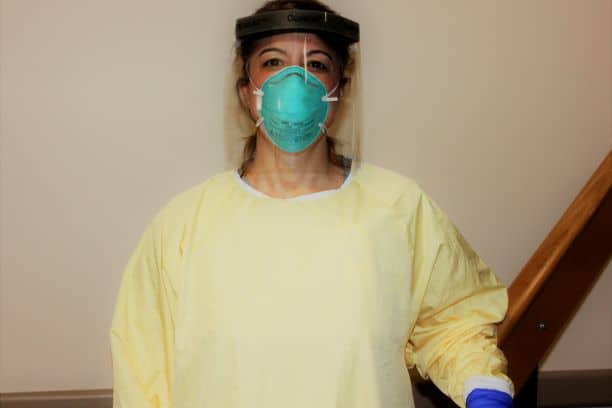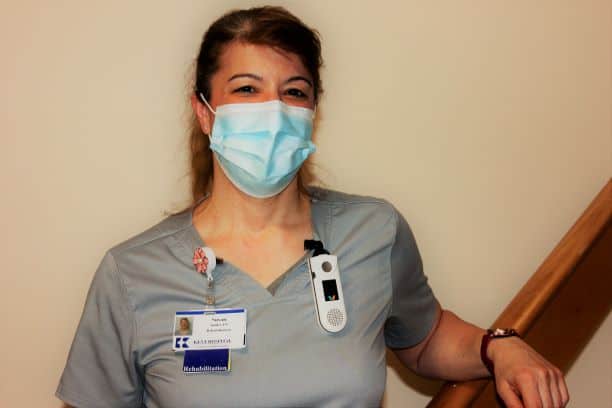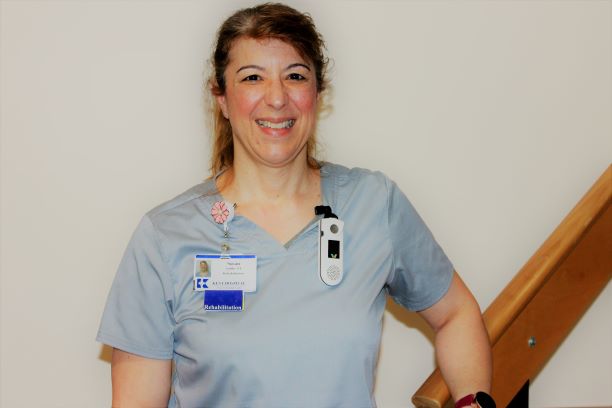
Physical therapy is a difficult service to provide during a pandemic and coronavirus/COVID-19 have certainly given us a challenge. By the pure nature of the job, physical contact with patients is an integral part of what we do, no matter what setting you work in. A lot of our clinical decisions and assessments are based on what we feel with our hands, not to mention the known therapeutic response that comes from touch alone. Maintaining adequate social distance makes it tough, if not impossible, to provide the quality of care and safety that we are used to giving
How have things changed?
The demand for physical therapy has dropped significantly. Elective surgeries have been placed on hold, new referrals are not coming in, and people are anxious about leaving the house. Outpatient orthopedic clinics have seen up to a 50-60% drop-off in their census and travelers throughout the country have seen their placements canceled. Therapists have had to transition to providing telehealth services, some have been laid off (including me, from my beloved outpatient job), and there have even been some PTs asked to change their role to support the needs of their facility…. And then there are the PTs that are in the front lines of caring for patients infected with the coronavirus.
One of my many fantastic co-workers at Kent Hospital, Susan Andler, PT has worked directly on the COVID-19 floor from the beginning of the pandemic. She was kind enough to sit down with me to answer some questions about her experience.
Disclaimer: This is one person’s reality; I understand that there are other healthcare professionals out there that are in much more difficult circumstances, and in no way do I intend to minimize what they are going through.
Interview conducted on 5/14/2020

Tell me a bit about your background in physical therapy.
I went to school at Quinnipiac College, now known as Quinnipiac University, and I have been practicing physical therapy for 32 years. I did home care for almost 20 years and have been in the inpatient setting for about a year.
How has your life been affected by the COVID-19 pandemic?
It was very stressful initially. Everybody at work had anxiety about getting COVID-19 from our patients and whenever you are working with other people, their thoughts and feelings affect you too. It was really hard when everyone was trying to figure out how this was affecting them personally, and at work. Everything was changing all the time so there were always updates about the procedures. When you go home, none of us had our regular coping strategies because we all had to stay there.
I think it has probably made everybody a little bit more on edge, but not a big difference overall. It was distracting at first because you kinda had to go through a thought process every day of ‘how is this affecting me?’, ‘what does this mean in what I need to do for my job?’, ‘how do I need to arrange things when I go home?’, ‘is it safe, am I going to have to worry about being around family?’, ‘do I have to worry about people catching COVID from me?’
And at home…
I was seeing COVID patients early on when they were first being hospitalized in Rhode Island, late in March, but my boyfriend, who works at another hospital, didn’t start seeing COVID patients until a couple of weeks ago. At first, he was worried he was going to get COVID from me, and now I get worried that I am going to get it from him. There’s a little more tension at home in general just because we’re a little unsettled. Our routine is off; we usually go to the gym together and spend time together going out to eat. Everybody’s home life isn’t quite the way it normally would be. Dynamics change in a relationship when everybody’s happy, and then when there are stressful things… But it doesn’t affect our rapport.
I was told that you volunteered to work on the COVID floor; what made you do that?
I didn’t officially volunteer. COVID patients that needed hospitalization but not the specialized care of an ICU or step-down unit went up on my floor. It was my floor and I just felt it was my responsibility to cover it, whether it was a stroke unit like it was before, or now that it’s just a COVID floor.
Now it is also our new COVID ARU (acute rehab unit); they currently have three patients in rehab. I don’t generally see the ARU patients, so the ARU therapists will go to the COVID floor. These are the first patients that they’ve had to see that are COVID positive, so they’ve been going through that whole initial nervous phase.
Is there any difference in what you do or how you treat the COVID positive patients?
Yes, only because I can’t leave the room. When I want to see how far they can walk I have to walk short laps back and forth. I can’t bring them on the stairs so I do more exercises with them, such as sit to stands from a chair to see if they have the adequate leg strength to be able to get upstairs.
Plus you have to bring in everything that you need; they don’t want people coming in and out of the rooms, so I may have to wait for someone to bring me things. Or sometimes a patient needs to be set up with a meal, or they need to be cleaned up a little bit- then I have to do it while I am there.
It’s a little bit more restrictive but I still give the same care that I do with everybody else. They are not getting any less than my other patients; I actually tend to spend longer with COVID patients. I do more treatment and exercise time with them because they usually need to go right from the hospital to home.
The floor nurses are great to work with. They are strong patient advocates so they still make sure that the patients get up every day. They work to support me and help me be able to make sure the patients get what they need. Sometimes people are here for weeks just because they are COVID positive and they’re not able to be discharged back home yet, so I work with the nursing staff to make sure the patients get quality of care while they’re here.
Did you have to go through any kind of special training?
The floor did have one of the doctors do a presentation on the proper sequence for donning and doffing the PPE (personal protective equipment) to minimize the risk of coming into contact with the virus. They put signs up on the doors to remind you of what PPE you’re supposed to use, what order to put it on, and they had a handout for taking it back off again. Since I was the first person going into COVID rooms I did some inservicing for the rest of the staff to make them feel comfortable with the process for the PPE.
In the beginning, we had a buddy system where you had to have someone watch you go through the whole process of donning & doffing your PPE. You had to get checked off to make sure you didn’t do anything accidentally or in the wrong order and potentially expose yourself to the virus. It was very time-consuming; it still is a little bit but more so in the beginning.

Did all this extra time affect your productivity?
Absolutely. Significantly, but it hasn’t been an issue. First of all, the census was low when we first started getting COVID patients because there were no elective surgeries anymore, and people in the community weren’t opting to come to the hospital as often. We didn’t have many patients to see so it wasn’t a problem that we weren’t keeping up our usual numbers. And my supervisor knew I was seeing COVID patients and that I was working all day doing as much as I could. I went from seeing 7-8 patients per day down to about 5-6; now my target is back up to 7.
Has the pandemic affected length of stay and discharge planning?
There are fewer beds available in the SNFs (skills nursing facilities) because whenever they accept a patient from the hospital they have to put a patient in quarantine for 14 days so a semi-private room becomes a private room. The SNFs can’t accept as many patients as they did before, so discharge has become more challenging for all of our patients that don’t have the optimal situation when they are ready to go.
In the beginning, there were no COVID positive nursing homes so they couldn’t leave until they were either safe to return to their own home, or became COVID negative. I had a couple of patients that stayed here because they needed SNFs and they couldn’t get discharged until they were safe to go back home. The same thing was happening with the general population. Most of the time if we recommend discharge to SNF it would take an extra 1-2 days or longer. The average length of stay in the hospital has increased significantly, at least for the population that we see for physical therapy.
Have you felt safe working on the COVID floor?
I feel as safe at work as I do when I go grocery shopping. I mean, you never know. We all might come into contact with COVID in our routine; we all have a risk of exposure no matter what we do. I don’t feel more at risk because I am seeing COVID patients.
I feel that Kent Hospital has set up good policies and procedures to protect me. Once I got over the overall anxiety I felt relatively safe when I was working with patients who have COVID because they are so rigorous in their routines on what rooms they keep people in and what PPE we use.
Will this experience in any way change the way you practice going forward?
I am doing a lot of continuing ed, so I am learning about proning and getting a little bit savvier on respiratory stuff. I am certainly getting very knowledgeable about COVID, which is never actually going to go away. So I think that I am acquiring some new skills. The APTA has been offering free webinars every week and there’s a lot of literature available.
Tell me more about proning.
Supine positioning limits your lung capacity the most; prone is the best with sitting and sidelying second. COVID has such a risk for pneumonia and respiratory complications. The idea is that if you prone people and change their position more often, you improve aeration and can potentially shorten their hospital stay and reduce the risk of their getting complications. Anybody that has compromised lung function requiring oxygen potentially could benefit from this.
All the ICUs prone patients now when they feel like they need it. They haven’t really been doing it up on the floor, and I hope to start working with the unit manager to hand-pick one or two patients who are on lower oxygen demands to try doing some proning and sidelying to help with opening up their lung capacity.
What are you doing to take care of yourself and cope with the stress of the pandemic?
Since I can’t go to the gym, I bought an exercise bike! I am mostly still following my healthy diet and I always make sure I get plenty of sleep; I don’t let this interfere with my wellness. And the weather is getting nice, the parks are going to be open so I will be able to go to the parks.
I’ve also decided to maintain contact with both of my daughters so that I have family time to look forward to; that was my compromise, that I needed some contact with my family. I was seeing them every week before this happened and now it’s more like every other week. But we do more social distancing.

What will physical therapy look like post-COVID-19-pandemic?
The truth is, in so many ways, we don’t know what’s going to happen or how long this will go on. We don’t know what the long-term changes will be for physical therapy. Maybe more people will choose to utilize telehealth services, maybe people will continue to want to stay home, or maybe it will take months to build back up to what we are used to.
Despite all the possibilities, I can’t help but be optimistic. As states start to open back up and elective surgeries resume, I think we can safely assume that referrals to physical therapy will follow. In the meantime, we can use this as an opportunity to grow as clinicians. Develop your observational and hands-off skills as a Zoom PT, do some chart reviews to improve your documentation, or take some continuing education.
We are still a caring profession that believes in our mission. People will still have dysfunction and need our help in getting to their optimal level of function. There will always be PTs out there who are willing to step up and do their duty. I do not doubt that physical therapy will persevere, and we’ll come out of the pandemic as stronger and more well-rounded therapists than we were before.

I’m a proud dad!
This is wonderfully written. Sue is truly courageous. She has stepped up repeatedly during a difficult time, and has become a hero.
Awesome post, Shanan! Insightful! Stay safe!
You are remarkable,Susan. Indeed you are a therapist for all seasons.
I wish I had more access to you. God bless you and your family.
Your Mother is truly proud of you and as your Godmother,I am also very proud of you.
Your answers to this questions elucidated this whole process beautifully. You are your Parents’ daughter.